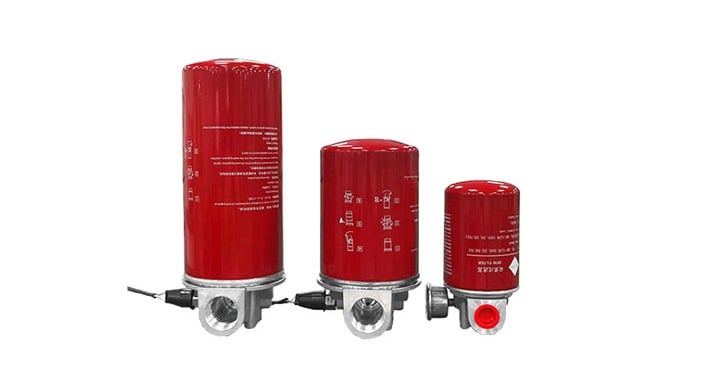The bypass valve of the oil return filter is mainly used to prevent the pressure difference of the filter element from being too high and to ensure that the oil supply of the system is not interrupted. When the filter element is used for a period of time, its pressure difference will increase to the expected limit, at this time the bypass valve will feel this pressure difference on the inlet side of the oil and open, the specific role is as follows:
1. Prevent the pressure difference of filter element from continuing to rise
(1) Protect the filter element: By opening the bypass valve to release the high pressure difference that the filter element has been subjected to, so as to prevent the filter element from being damaged due to high pressure.
(2) Maintain filtration accuracy: the spring pressure of the bypass valve is slightly lower than the pressure difference generated after the filter element is blocked, ensuring that the filter element will not lose its due filtration accuracy due to high pressure.
2. Ensure uninterrupted oil supply to the downstream
(1) Avoid suction phenomenon: The bypass valve opens when the filter plugging pressure reaches its opening pressure to prevent the pump sucking phenomenon caused by the filter plugging.
(2) Temporary protection of equipment operation: even if the filter is blocked, the bypass valve can be opened to temporarily ensure that the operation of the equipment is not affected, but this state is not recommended for long-term use, because the unfiltered oil may cause secondary pollution.
3. Diversity of bypass valve types and functions
(1) Simple bypass function: This valve is only opened when a specific pressure is reached, playing a basic pressure relief protection role.
(2) Two-way action: This kind of valve prevents the oil from passing through the filter element in the reverse direction, ensuring that the oil can only flow forward, so as to protect the filter element from the influence of the reverse flow.
(3) One-way action: prevent downstream oil loss when replacing the filter element, thereby reducing oil loss and environmental pollution during maintenance.
Multifunctional combination: The combination of bypass, two-way and one-way action provides the most comprehensive protection and functionality.
4. Design and structure of bypass valve
(1) Sealing design: For example, the conical sealing surface can be well sealed with the oil inlet under the action of the rear end spring without oil leakage, to ensure that the valve remains sealed under high pressure difference.
(2) Safety standards: In some high-standard applications (such as aircraft hydraulic systems), the hard seal point of the bypass valve needs to be strictly inspected to ensure that there is no leakage before the safety valve is opened.
5. Practical application precautions of bypass valve
(1) Regular inspection: The status of the bypass valve should be regularly checked to ensure its normal operation, especially in high pressure and high load application scenarios.
(2) Timely replacement of the filter element: Although the bypass valve can provide temporary protection when the filter element is blocked, the filter element should be replaced in time to avoid long-term unfiltered oil causing damage to the system.

